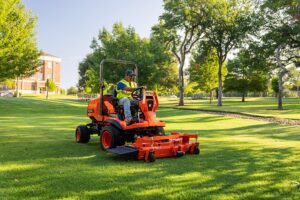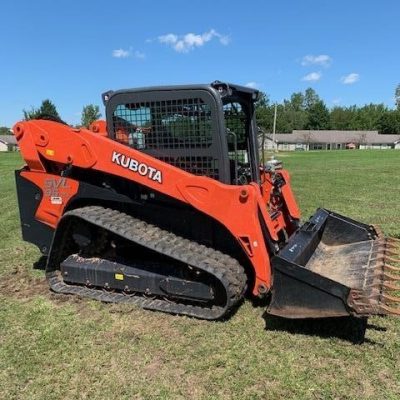As autumn leaves begin to fall and temperatures drop, your equipment faces months of harsh winter conditions ahead. Will your tools be ready to perform when spring arrives, or will you be dealing with costly repairs and replacements?
Smart equipment maintenance isn’t just about extending tool life—it’s about maximizing your investment and ensuring peak performance when you need it most, whether you’re a homeowner managing seasonal tasks or a professional maintaining commercial equipment. Proper fall preparation can save you hundreds of dollars in repair costs and prevent frustrating downtime.
This comprehensive guide walks you through the essential maintenance steps for your most important equipment categories. From lawn mowers that have worked overtime all summer to power tools that need winter storage preparation, we’ll cover everything you need to know to keep your equipment running at maximum efficiency.
Lawn Mower Maintenance: Preparing Your Workhorse for Winter
Your lawn mower has been your reliable partner throughout the growing season. Now it’s time to return the favor with proper maintenance that ensures it starts easily next spring.
Blade Sharpening and Inspection
Dull mower blades don’t just cut grass poorly—they damage your lawn by tearing rather than cleanly cutting grass blades. This leaves your turf vulnerable to disease and creates that brown, frayed appearance nobody wants.
Start by disconnecting the spark plug for safety. Remove the blade using a socket wrench, marking the orientation so you can reinstall it correctly. Inspect the blade for nicks, cracks, or excessive wear. Sharp blades should have a clean edge without visible damage.
Professional sharpening typically costs $10-15 and ensures optimal performance. However, with the right tools, you can sharpen blades yourself using a bench grinder or a file. Maintain the original angle and ensure both ends are balanced to prevent vibration during operation.
Oil Changes and Engine Care
Fresh oil is crucial for engine longevity. Old oil contains contaminants and breaks down over time, reducing its protective qualities during storage.
Run your mower for a few minutes to warm the oil, making it flow more easily. Position a drain pan under the oil drain plug or use an oil extractor through the dipstick tube. Remove all old oil completely—any remaining contaminated oil will compromise the fresh oil’s effectiveness.
Install a new oil filter if your mower has one, and refill with the manufacturer’s recommended oil type and quantity. Most walk-behind mowers require SAE 30 oil, while riding mowers often use 10W-30.
Air Filter Maintenance
Clean air filters ensure proper engine breathing and fuel efficiency. Remove the air filter housing and inspect the filter element. Paper filters should be replaced if dirty or damaged—never wash paper filters, as this destroys their filtering capability.
Foam filters can be washed in warm, soapy water, rinsed thoroughly, and re-oiled with clean engine oil before reinstallation. A properly maintained air filter can improve fuel efficiency by up to 10% and significantly extend engine life.
Gardening Tools: Preserving Your Essential Hand Tools
Quality gardening tools represent a significant investment that can last decades with proper care. Fall maintenance prevents rust, maintains sharp edges, and ensures your tools are ready for spring planting.
Thorough Cleaning Process
Begin with a complete cleaning to remove all soil, plant residue, and sap. Use a wire brush or steel wool for stubborn deposits, followed by soap and water for a thorough clean. Pay special attention to pivot points on pruning shears and loppers where debris often accumulates.
For tools with significant rust, use naval jelly or rust remover according to manufacturer directions. Light surface rust can often be removed with fine steel wool and elbow grease.
Sharpening and Edge Maintenance
Sharp tools make gardening easier and produce cleaner cuts that heal faster on plants. Use a mill file or sharpening stone to restore edges on shovels, hoes, and pruning tools. Maintain the original bevel angle—typically 20-30 degrees for most cutting tools.
Pruning shears require special attention since clean cuts prevent disease transmission between plants. Disassemble if possible and sharpen each blade individually. Don’t forget to clean blades with rubbing alcohol to remove any plant pathogens.
Proper Lubrication and Storage
Apply a light coat of oil to all metal surfaces to prevent rust during storage. 3-in-1 oil or light machine oil works well for most applications. Pay special attention to springs, pivot points, and adjustment mechanisms.
Store tools in a dry location, hanging them when possible to prevent moisture accumulation. Wooden handles benefit from annual treatment with linseed oil to prevent cracking and splintering.
Power Tools: Protecting Your Electric Investment
Power tools require specialized maintenance to ensure electrical safety and mechanical reliability. Proper fall preparation prevents costly repairs and maintains peak performance.
Electrical System Inspection
Begin with a thorough inspection of all power cords, looking for cuts, kinks, or exposed wiring. Damaged cords present serious safety hazards and should be replaced immediately—never attempt to repair damaged power cords with tape.
Check all plugs for loose connections or damaged prongs. Three-prong grounded plugs are essential for safety and should never be modified or used with cheater plugs that bypass the ground connection.
For cordless tools, inspect battery packs for cracks, corrosion, or swelling. Clean battery contacts with a dry cloth and store batteries in a cool, dry location. Most modern lithium-ion batteries should be stored with a 40-60% charge for optimal longevity.
Cleaning and Maintenance
Remove all dust, debris, and accumulated material from tool housings and vents. Compressed air works well for this task, but ensure you’re wearing safety glasses. Clogged vents lead to overheating and premature motor failure.
Lubricate any grease fittings according to manufacturer specifications. Over-lubrication can be as harmful as under-lubrication, so follow recommended intervals and quantities precisely.
Storage Considerations
Store power tools in their original cases when possible, as these provide the best protection against moisture and impact damage. For tools without cases, create dedicated storage areas that protect them from temperature extremes and humidity.
Consider using moisture-absorbing packets in storage areas, especially for tools stored in basements or garages where humidity can be problematic.
Snow Blower Preview: Early Winter Preparation
Even though snow season may be months away, early preparation ensures your snow blower starts reliably when that first storm hits.
Engine and Fuel System Check
Inspect the engine for any obvious damage or wear. Check the spark plug and replace if necessary—a fresh spark plug ensures reliable starting in cold weather.
If you stored your snow blower with fuel, check for signs of fuel degradation or water contamination. Stale fuel is one of the most common causes of starting problems. Consider adding fuel stabilizer if you plan to store fuel in the machine, or drain the fuel system completely for long-term storage.
Auger and Chute Inspection
Examine the auger blades for damage and ensure all shear pins are present and in good condition. Test the chute rotation mechanism and lubricate if needed. These simple checks now prevent frustrating breakdowns during the first snowfall.
Check tire pressure on wheeled models and inspect skid shoes for wear. Properly adjusted skid shoes protect your driveway surface while ensuring effective snow removal.
Maximize Your Equipment Investment This Fall
Proper fall maintenance isn’t just about preventing problems—it’s about maximizing the return on your equipment investment. Well-maintained tools last longer, perform better, and retain more resale value than neglected equipment.
The time you invest in maintenance now pays dividends throughout the coming seasons. Sharp tools make work easier and more enjoyable. Properly maintained engines start reliably and consume less fuel. Clean, well-oiled equipment operates smoothly and safely.
Don’t wait until spring to discover maintenance issues that could have been prevented. Take action now to ensure your equipment is ready to deliver peak performance when you need it most. Your future self will thank you when everything starts easily and works flawlessly next season.







